Birdwatchers in the United States and Canada have the pleasure of spotting several birds with red heads. These vibrant birds add a pop of color to the natural landscape and backyard feeders alike. From the House Finch, Purple Finch, and Cassin’s Finch, to the Red Crossbill, Pine Grosbeak, and Northern Cardinal, there is no shortage of variety. Each bird has its own unique habits and preferred feeding grounds. While finches are commonly found in trees, sparrows tend to stick to the ground. Cardinals, tanagers, flycatchers, and woodpeckers also showcase their red heads, each with their own distinct habitats. So, whether you’re a seasoned birdwatcher or just starting out, keep an eye out for these stunning red-headed birds in your neck of the woods.
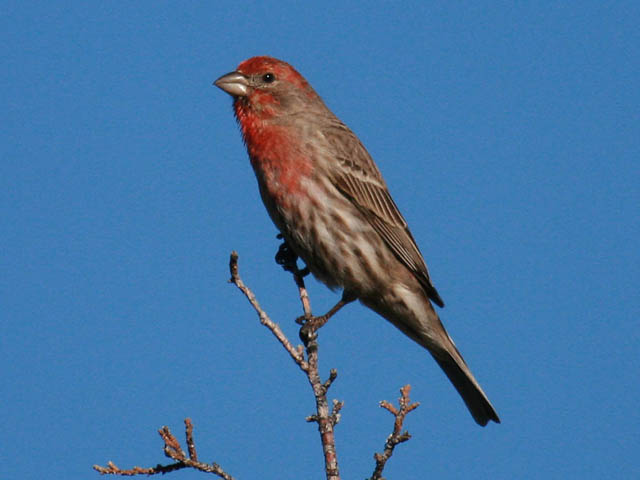
House Finch
The House Finch is one of the most common birds with a red head seen in backyard feeders throughout the United States and Canada. These petite birds display a vibrant red coloration on their crowns and faces, which contrasts beautifully against their brownish bodies. Male House Finches showcase a more intense red coloration, while females have a subtler hue.
These finches are often found in trees, where they gather in small flocks to forage for seeds and fruits. They have a delightful song that can be heard throughout the year, adding to the pleasant ambiance of backyard spaces. Their adaptability and sociable nature make them a favorite among birdwatchers, as they frequently visit feeders and provide delightful entertainment.
Purple Finch
Another exquisite bird with a red head is the Purple Finch. These stunning birds possess a stunning rose-red crown that immediately catches the eye. Males boast a richer, deeper shade of red, while females display a more subdued tone. In addition to their red heads, Purple Finches feature a brownish body with streaks and pink undertones.
Purple Finches can be found in coniferous and mixed woodlands, where they forage for seeds, buds, and insects. Their melodious song, reminiscent of a warbling whistle, can often be heard echoing through the forest. While they may visit backyard feeders, they tend to be more elusive and prefer the serenity of their natural habitats.
Cassin’s Finch
Cassin’s Finch, yet another beautiful bird with a red head, delights bird enthusiasts with its vivid raspberry-colored crown. This medium-sized finch captures attention with its striking appearance. Males showcase a vibrant red head, chest, and rump, while females exhibit a more muted plumage with grayish tones.
These finches primarily inhabit coniferous forests, where they can be seen perched on branches or foraging for seeds and insects. Their distinct calls, a series of sweet warbles and trills, can often be heard as they explore their territory. Though they may visit feeders, Cassin’s Finches are more commonly found fluttering through the evergreen forests they call home.
Red Crossbill
The Red Crossbill is a uniquely adapted finch species, boasting a specialized bill that allows it to extract seeds from conifer cones. Although they do not have the typical red head, their fascinating appearance warrants their inclusion in this article. Males display a reddish-orange hue across their bodies, while females exhibit more subdued shades of yellow or olive-green.
These crossbills are mainly found in coniferous forests, where they rely on the seeds of pine, spruce, and other cone-bearing trees for sustenance. Their bills are perfectly designed to pry apart and extract seeds from cones, making them incredibly efficient feeders. The Red Crossbill’s distinctive calls, resembling a muffled chip or a rapid trill, add to the ambiance of the forests they inhabit.
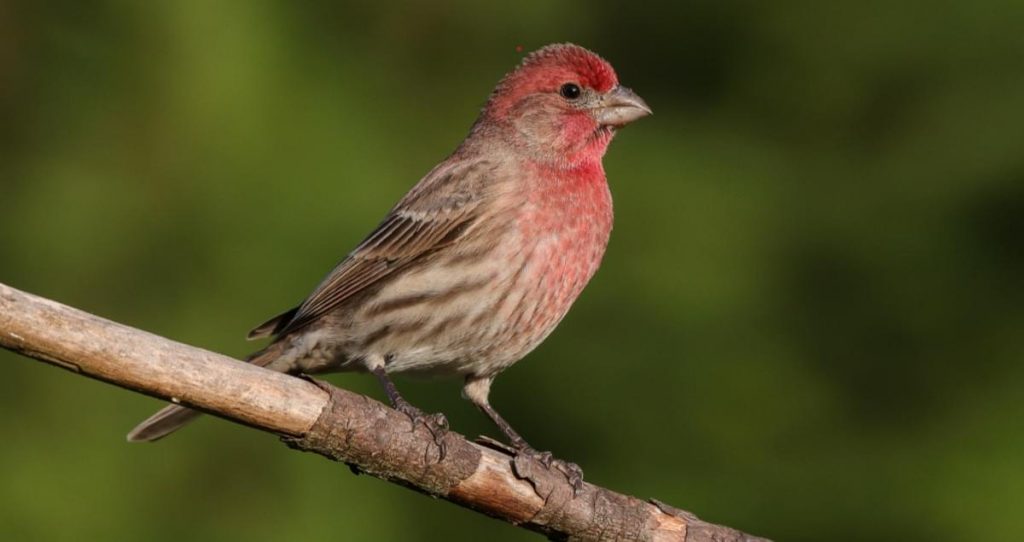
Pine Grosbeak
Pine Grosbeaks are large and robust finches with a colorful plumage that includes a red head. Males showcase a vibrant raspberry-red crown, while females display a more subtle reddish hue. Their bodies are predominantly grayish with shades of olive and hints of yellow on their wings and tails.
These grosbeaks are primarily found in coniferous and mixed forests across North America. They feast on a varied diet of seeds, fruits, and occasionally insects. Their calls are clear and whistling, making them easily distinguishable among the trees. While Pine Grosbeaks may occasionally visit backyard feeders, they are more commonly spotted perched high in the branches, enjoying the solitude of their natural surroundings.
Northern Cardinal
The Northern Cardinal is a well-known bird, famous for its brilliant red plumage and distinctive crest. Males showcase a vibrant red head, wings, and tails, while females exhibit a more subdued reddish color with hints of brown. Their striking appearance and beautiful song make them a sought-after sight among birdwatchers.
These cardinals can be found in various habitats, from thickets and shrubbery to woodlands and urban areas. They are omnivorous, feeding on a variety of seeds, fruits, insects, and even small vertebrates. Their whistling song, often described as a loud, clear series of notes, can be heard throughout the year, adding a touch of cheerfulness to any environment.
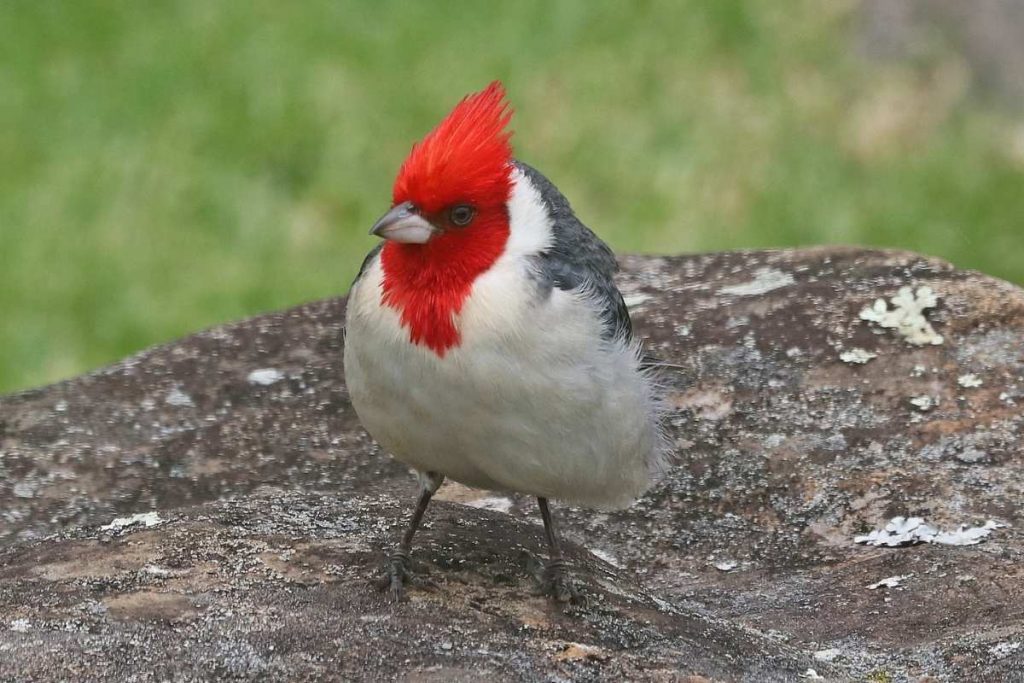
Pyrrhuloxia
The Pyrrhuloxia, or “Desert Cardinal,” shares similarities with the Northern Cardinal but possesses its own unique charm. With a vibrant red crest, face, and breast, it is unmistakable against the desert backdrop. These birds exhibit sexual dimorphism, wherein the males boast a more intense red coloration, while females have a duller hue. They also have an intriguing curved beak that aids in extracting seeds.
Pyrrhuloxias inhabit arid regions of the southwestern United States and northern Mexico, where they feed on a diet of seeds, fruits, and insects. Their calls are whistled phrases interspersed with croaky sounds, which can be heard as they traverse the desert scrub. While they may visit feeders, they are most frequently observed perched high on cacti or desert shrubs, embracing their arid habitat.
Summer Tanager
The Summer Tanager, as its name suggests, is associated with the warm months when it migrates to North America. These stunning birds boast a bright red plumage, including their head, throat, breast, and rump. Males exhibit a more intense shade of red, while females have a more subdued tone with hints of yellow or olive.
This tanager species can be found in various habitats, including forests, woodlands, and suburban areas, where they feed primarily on insects, especially bees and wasps. Their melodious songs, resembling a series of musical phrases, can often be heard echoing through the trees. The Summer Tanager’s vibrant red head adds a splash of color to the green canopies they frequent during their migration.
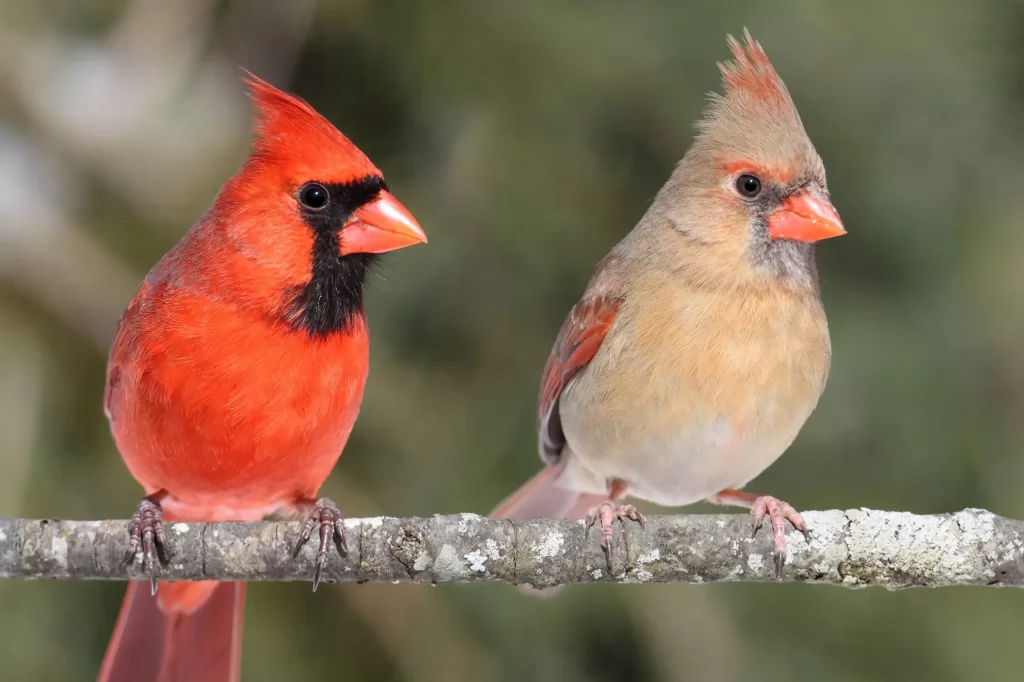
Western Tanager
The Western Tanager, a close relative of the Summer Tanager, shares a similar striking appearance. These birds boast a vivid yellow body, adorned with a cherry-red head and black wings and tail. Males showcase a brighter red hue, while females have a more subtle tone. Their contrasting colors make them a remarkable sight among the foliage.
Western Tanagers can be found in coniferous and mixed woodlands, where they forage for insects, fruits, and nectar. Their song is a melodious warble, often described as a hoarse robin-like tune. While they may occasionally visit backyard feeders, they are more frequently observed flitting through the treetops, adding vibrant splashes of color to the forest scenery.
Conservation Status
Many birds with red heads face a variety of threats that impact their populations. Habitat loss and degradation due to urbanization, deforestation, and agriculture have reduced suitable nesting and foraging sites for these birds. Climate change is another concern, as it alters the timing of food availability and can disrupt migratory patterns.
Threats
Some specific threats faced by these birds include the introduction of non-native species, such as predatory mammals and birds, which can negatively impact their nesting success. Pesticide and herbicide use also poses a threat by reducing insect populations, which are a vital food source for many of these birds. Additionally, collisions with buildings and communication towers pose a risk to their survival.
Conservation Efforts
Numerous organizations and individuals are working diligently to protect and conserve these birds with red heads. Conservation efforts include habitat restoration and protection, the creation of migratory corridors, and the implementation of conservation plans to minimize the impact of human activities on their populations. Community engagement and education programs also play a crucial role in raising awareness and fostering a sense of responsibility towards bird conservation.
By supporting these conservation initiatives and providing suitable habitats in our own backyards, we can contribute to the preservation of these magnificent birds. Creating bird-friendly spaces with native plants, providing clean water sources, and reducing or eliminating pesticide use are simple steps that can make a significant difference. Together, we can ensure the continued presence of these charismatic birds and marvel at the beauty of their red heads for generations to come.
In conclusion, the United States and Canada are home to an array of birds with either fully or partially red heads. From finches to cardinals to tanagers, these avian wonders captivate us with their vibrant plumage and enchanting songs. While they face various threats, conservation efforts aimed at protecting their habitats and raising awareness can help ensure their survival. So let’s celebrate the red-headed birds that grace our lives and do our part in preserving their place in the natural world.
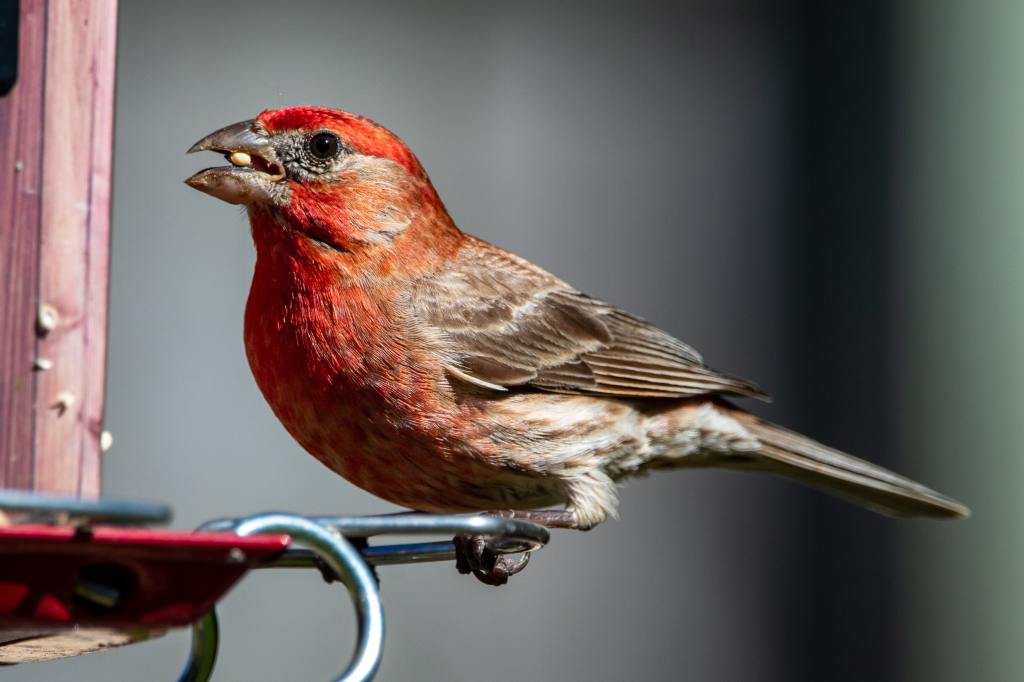
Leave a Reply